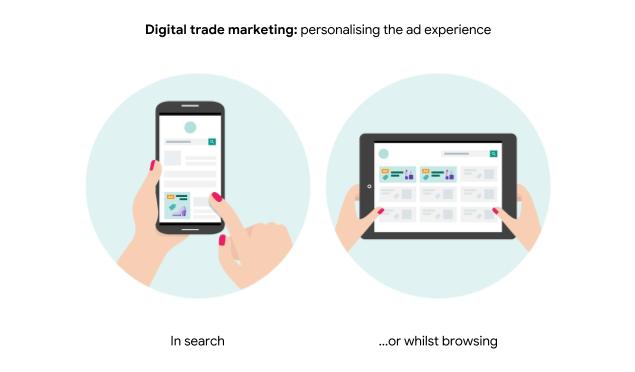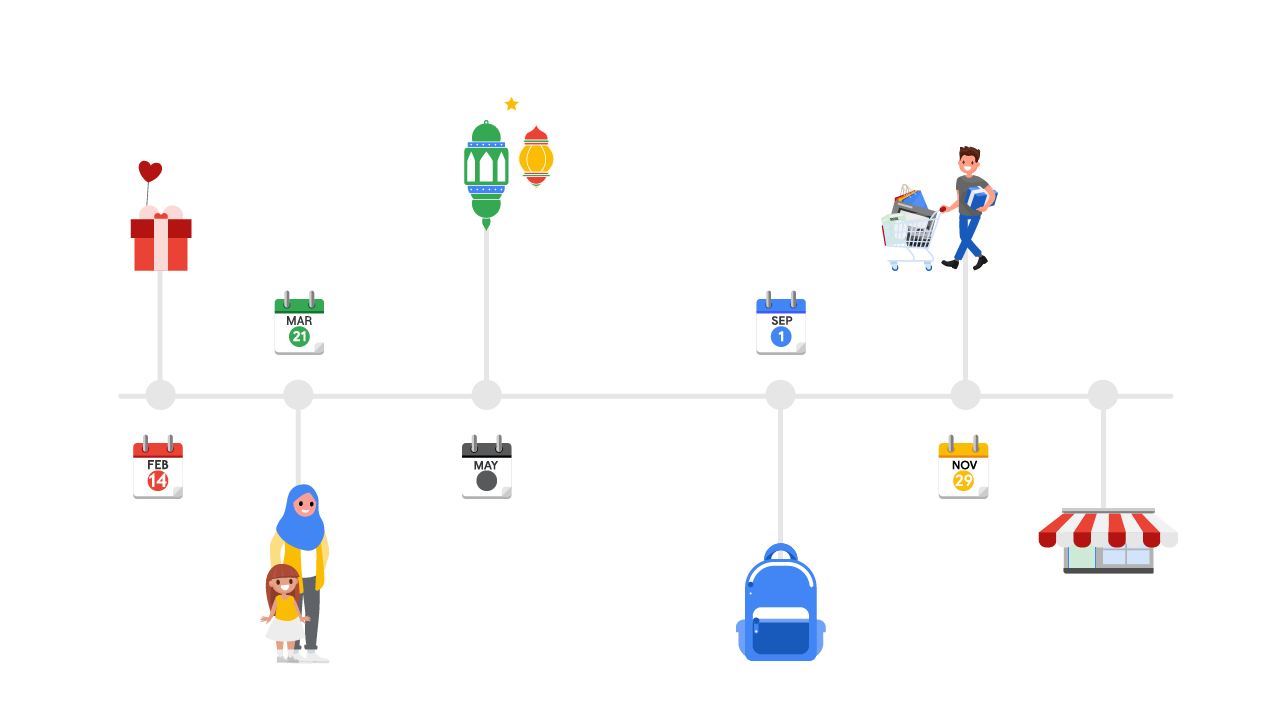Google’s Ankit Jain reveals how closer collaboration between retailers and suppliers in the digital age can make marketing more effective and boost growth.
The state of play for retailers: Evolving shopping behaviour
As the market evolves, retailers are finding themselves in the middle of three significant trends. First, digital’s prominence in the retail industry is growing. On the one hand, e-commerce sales are increasing in double digits (compounded annual growth of 14.8% in the US, 26.6% in Canada, 14.6% in the UK, 12.2% in France and 15.1% in Germany from 2011 to 2016). Meanwhile, store sales have stagnated (compound annual growth was only 2.6% in the US, 2.3% in Canada, 1% in the UK, 0.8% in France and 1.2% in Germany over the 2011 to 2016 period).1 And digital is increasingly influencing physical store sales, too. Research shows that 13% of retail store sales were impacted by a digital touchpoint in 2004, compared to well over half (58%) by 2017.2
At the same time, the retail industry is challenged by huge margin pressure. Top multichannel retailers saw their earnings before interest and taxes decline between 2010 and 2016 – from 5.5% to 4.1% in the UK, from 3.6% to 2.4% in France and from 3.1% to 2.8% in Germany.3 This means retailers need to find new ways of increasing margins.
Of course, at the heart of all this is the consumer – and consumer expectations in retail are changing. Today, people are looking for simplicity and ease when browsing or placing orders. They anticipate exceptional customer service and – most importantly – personalisation, with 77% of consumers expecting products and offers that appeal to their personal tastes.4
Taking consumer experience to the next level
For retailers and manufacturers facing challenges in a shifting landscape, leveraging the power of digital in trade marketing (a global business that’s now worth $500 billion5) offers a unique opportunity to improve the customer experience. Rather than reflecting the omnichannel behaviour of today’s consumer, the majority of trade marketing budgets are still spent in traditional ways, through offline paid media and offline platforms (think in-store displays, printed in-store media and targeting through coupons based on products that the consumer has previously purchased).
But by using technology and data, retailers are in a position to show the right product to the right person, at the right time, in the right place. Showing ads that are timely and relevant drives traffic, conversions and sales. This means retailers can provide exactly what manufacturers need – improved and measurable return on investment. Advertising also represents a high-margin, low-cost revenue stream for the retailer. In short, pursuing trade marketing budgets is a way for retailers to stimulate their own growth.
The benefits go even further than that, though. Digital provides the ability for a retailer to collaborate closely with the manufacturer and take consumer experience to the next level. By understanding their customers’ preferences more deeply, a retailer gains the ability to assist the customer’s movement down the purchase funnel – from the moment product research begins to the moment when the final purchase decision is made. Technology enables that influence to be measured not only for e-commerce transactions, but also for physical store sales.
Putting digital trade marketing into practice
Sometimes a consumer is looking for a specific product online, while other times he or she is browsing more generally. Digital trade marketing tools can help manufacturers reach consumers in both of these mindsets.
For example, the consumer might be searching on a retailer’s website. When the retailer makes sponsored search ad opportunities available to brand manufacturers, it enables the manufacturers to promote their products in the search results. These results look just like organic search listings and click directly to the product page, driving consumers further down the shopping funnel.

So what if the consumer is browsing? With the right technology in place on their own platform, the retailer can show highly relevant shoppable display ads promoting the manufacturer’s product. These click straight to the product page, too. And when the consumer is browsing elsewhere on the internet, shoppable display ads in paid media click to the product page on the retailer’s site.
In using these kinds of digital trade marketing techniques, many retailers are already collaborating with manufacturers to help both parties reap considerable benefits. For instance, Amazon is turning audience data into monetisation opportunities by serving manufacturers’ ads on their sites.6 And in providing robust attribution reporting to their partners, Amazon can offer a level of transparency that’s been difficult to match in an offline context. Meanwhile, Alibaba is another player that has expanded beyond online retail through its advertising platform Alimama.7
Walmart offers another case in point. The retail giant increasingly operates as an advertising platform, and gives manufacturers an opportunity to personalise ads to consumers who are already interested in a product. Not only can increasing ad relevance drive marketing effectiveness, but because Walmart is able to connect the manufacturer’s digital advertising activity with in-store sales, each manufacturer can also attribute their spend accurately.8
A powerful way to delight today’s demanding consumer
Digital trade marketing gives retailers a way to increase sales and margins, fund traffic acquisition and strengthen supplier relationships. For manufacturers, these tools are a way to increase sales, gain insights into campaign effectiveness and optimise return on advertising spend. But perhaps more importantly, digital trade marketing gives both entities a way to capitalise on the monumental shifts taking place in consumer behaviour in the retail environment. Thanks to groundbreaking technologies and digital services, customers’ expectations have been elevated higher than ever. People want useful, engaging, assistive experiences from all the brands they interact with. With the ability to personalise ads, digital trade marketing is a powerful way to meet the needs of today’s demanding consumer.







